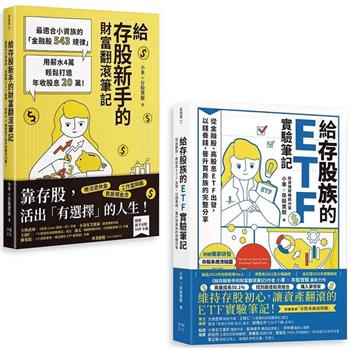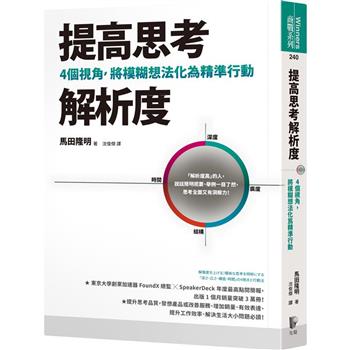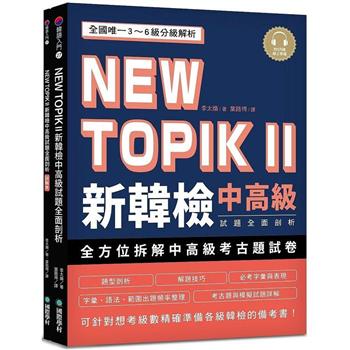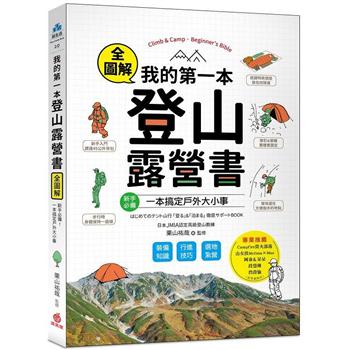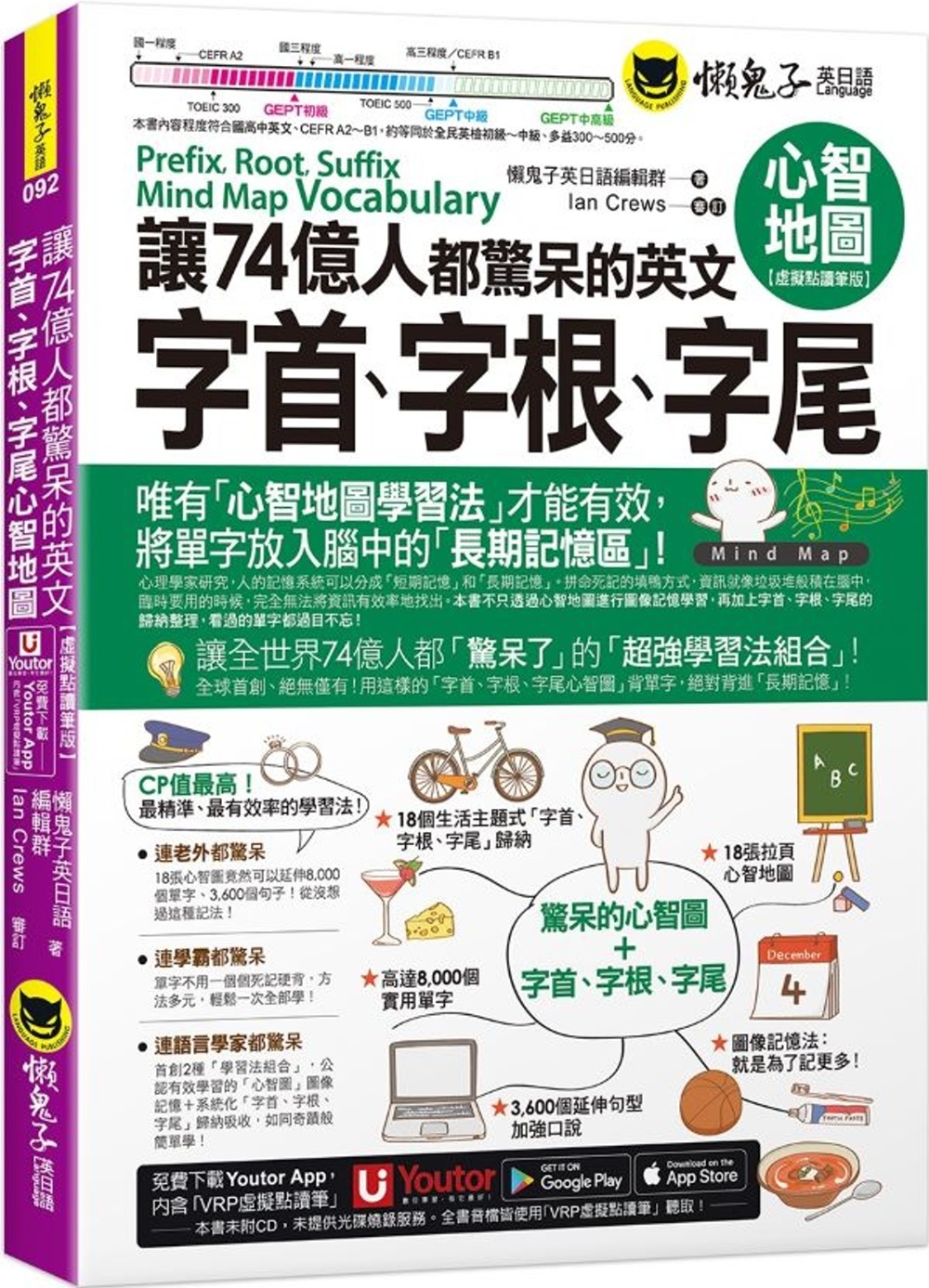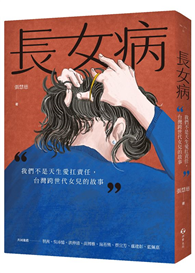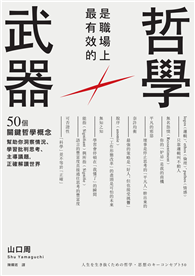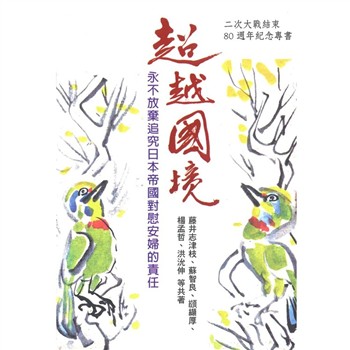★國立政治大學外國語文學院「教育部高教深耕計畫」,展開國際交流的里程碑!
《用英語說臺灣文化》緣起
我們發現太多外國師生來臺後都想繼續留下來,不然就是臨別依依不捨,日後總找機會續前緣,再度來臺,甚至呼朋引伴,攜家帶眷,樂不思蜀。當然,有些人學習有成,可直接閱讀中文;但也有些人仍需依靠其母語,才能明白內容。為了讓更多人認識寶島、了解臺灣,雙語的《用外語說臺灣文化》便提供了對大中華區文化,尤其是臺灣文化有興趣的愛好者諸多素材,其中內容深入淺出,易懂、易吸收,內文亦能博君一粲。
★浮光掠影話臺灣──猶如萬花筒般繽紛精彩的國度!
《用英語說臺灣文化》共有9章,分別以臺灣地理歷史、產業、宗教信仰、社會脈動、藝術休閒……等不同角度介紹臺灣,內容皆是臺灣人熟悉的日常。
本書內容豐富多元,以英文為主,中文為輔,深入淺出,易懂、易吸收,認識寶島、了解臺灣就靠《用英語說臺灣文化》!9章內容如下:
I. Natural Landscapes地理景觀
II. History & Population歷史與人口
III. Industry & Innovations產業脈動
IV. Religious Mural宗教信仰
V. Holidays & Festivals節慶與祭典
VI. Culinary Delights飲食文化
VII. Social Pulse 社會脈動
VIII. Folk Practices民間習俗
IX. Arts & Entertainment藝術與休閒
每章有2~7個主題介紹該篇內容,主題豐富詳實:
I. Natural Landscapes地理景觀|地理位置、氣候
臺灣地處東亞,地形豐富多變化,北迴歸線在島嶼的中央通過,居於熱帶與亞熱帶之間,雖然國土面積很小,卻造就了很多美麗的自然景觀與生態。
II. History & Population歷史與人口|歷史回顧、人口變遷
自17世紀起,臺灣便開始經歷許多外來勢力的統治,而現今二千三百萬的人口中更涵蓋了各種族群,其中還有近20年來自東南亞移民到臺灣的新移民,都成就了臺灣當今多元包容的社會。
III. Industry & Innovations產業脈動|蛻變的經濟體、臺北101大樓、蘭花王國、中醫、交通號誌的故事
臺灣自1950年代至今,走過七個階段的經濟轉型,仍不斷在各個領域力求創新,除了建造抗震性佳的臺北101大樓,臺灣目前也是全世界最重要的蝴蝶蘭出口國,而動態小綠人交通號誌也是臺灣創新的點子。
IV. Religious Mural宗教信仰|宗教多元化、廟宇文化與神祉信奉、媽祖遶境、發光發熱的傳教士
臺灣的宗教包容度在全世界232個國家中名列第二,僅次於新加坡,更有超過一萬二千多所的廟宇在大街小巷中崢嶸並存。本章也將介紹從17世紀至今,許許多多來臺的西方傳教士,他們為臺灣的醫療、教育及文化發展無私奉獻,也在臺灣找到另一個故鄉。
V. Holidays & Festivals節慶與祭典|重要節慶、鬼月、王船祭、原住民慶典
農曆新年、端午節、中秋節並列臺灣的三大節慶。農曆七月十五日則是中元節,這天全國各地的寺廟都會舉辦盛大的中元祭典。除此之外,原住民族也有各自的重要慶典,充滿了對大自然的崇敬、對祖先的感懷、以及對族人的相互照顧。
VI. Culinary Delights飲食文化|鼎泰豐、夜市文化、珍珠奶茶、辦桌文化
外國人常聽到的鼎泰豐小籠包和珍珠奶茶,是如何發跡的呢?夜市和辦桌也都展現了強韌的庶民文化,在每道端上桌的美食背後,都有值得一探究竟的好功夫。
VII. Social Pulse 社會脈動|性別友善的臺灣、性別平權在臺灣、統一發票兌獎、便利超商、倒垃圾文化
臺灣在2019年成為亞洲第一個認可同性婚姻的國家,在亞洲地區名列前茅。1950年代推出統一發票為政府及民眾帶來財政雙贏。自1997年起,臺北市率先發起了「垃圾不落地」的政策,也成功讓民眾成為參與回收工作重要的一環。
VIII. Folk Practices民間習俗|十二生肖、春聯、送禮、婚禮習俗、冥婚、算命、禁忌與迷信
十二生肖有如西方的星象學,它的由來是什麼呢?冥婚背後乘載了哪些特殊的文化意涵呢?送禮、婚禮、算命,有哪些習俗和禁忌是外國人來臺灣必須注意的呢?一起來看看吧。
IX. Arts & Entertainment藝術與休閒|雲門舞集、歌仔戲、布袋戲、溫泉、新衝浪樂園、平溪天燈節
享譽國際的雲門舞集,有許多舞作都反映了臺灣社會的現況與國際處境。歌仔戲及布袋戲更已從傳統的休閒娛樂躍升藝術殿堂。溫泉、適合衝浪的海岸線及平溪天燈,每年更是吸引眾多國際觀光客前來體驗。
《用英語說臺灣文化》不僅是英語學習書,更是一本讓外國人能夠了解臺灣的國情和文化,進而擴展臺灣在世界能見度的文化導覽書。英語的學習不僅是單向了解及投入英美等國的生活情境,更可以反向讓外國人認識並體驗臺灣國情、民情及文化。
希望《用英語說臺灣文化:浮光掠影話臺灣》可以成為外國人認識臺灣民情文化的指南,也能扮演文化交流的角色。
★本書特色
‧最道地的英語導覽解說
‧最詳盡的臺灣文化認識
‧最貼近臺灣人的日常生活
‧建立臺灣與國際交流最實用的文化專書
作者簡介:
Cynthia Tsui
Growing up in the heart of downtown Taipei, Cynthia Tsui had aspirations of becoming an artist, a figure skater, an interior designer, and a theatre director. Instead, she has become a hardcore academic. Writing the book allows her to resume her artistic soul with a bi-cultural lens.
Academic background:
.Ed.M. TESOL, University at Buffalo, U.S.A.
.Ph.D. Educational Psychology, University at Buffalo, U.S.A.
Current position:
Assistant Professor, Foreign Language Center, National Chengchi University
Experience:
.Five-time Distinguished Teaching Award recipient at National Chengchi University
.Visiting Scholar to Georgetown University, U.S.A.
崔正芳
研究跨領域的學者,早年從事跨文化研究,近年則貢獻心力於臺灣的雙語教育,參與跨校團隊,從事大專英語授課專業科目的師資培訓。在跨領域、跨文化、跨校的經驗中,培養獨特的眼光,書寫家鄉臺灣。
學歷:
美國紐約州州立大學水牛城分校英語教學碩士、教育心理博士
現任:
國立政治大學外文中心 專任助理教授
經歷:
國立政治大學教學特優老師
美國喬治城大學訪問學者
作者序
緣起
國立政治大學外國語文學院的治學目標之一,就是要促進對世界各地文化的了解,並透過交流與溝通,令對方也認識我國文化。所謂知己知彼,除了可消弭不必要的誤會,更能增進互相的情誼,我們從事的是一種綿密細緻的交心活動。
再者,政大同學出國交換的比率極高,每當與外國友人交流,談到本國文化時,往往會詞窮,或手邊缺少現成的外語資料,造成溝通上的不順暢,實在太可惜,因此也曾提議是否能出一本類似教材的文化叢書。這個具體想法來自斯拉夫語文學系劉心華教授,與同仁們開會討論後定案。
又,透過各種交流活動,我們發現太多外國師生來臺後都想繼續留下來,不然就是臨別依依不捨,日後總找機會續前緣,再度來臺,甚至呼朋引伴,攜家帶眷,樂不思蜀。當然,有些人學習有成,可直接閱讀中文;但也有些人仍需依靠其母語,才能明白內容。為了讓更多人認識寶島、了解臺灣,我們於是興起編纂雙語的《用外語說臺灣文化》的念頭。
而舉凡國內教授最多語種的高等教育學府,就屬國立政治大學外國語文學院,且在研究各國民情風俗上,翻譯與跨文化中心耕耘頗深,舉辦過的文康、藝文、學術活動更不勝枚舉。然而,若缺乏系統性整理,難以突顯同仁們努力的成果,於是我們藉由「教育部高教深耕計畫」,結合院內各語種本國師與外師的力量,著手九冊(英、德、法、西、俄、韓、日、土、阿)不同語言的《用外語說臺灣文化》,以外文為主,中文為輔,提供對大中華區文化,尤其是臺灣文化有興趣的愛好者參閱。
我們團隊花了一、兩年的時間,將累積的資料大大梳理一番,各自選出約十章精華。並透過彼此不斷地切磋、增刪、審校,終於完成這圖文並茂的系列書。也要感謝幕後無懼辛勞的瑞蘭國際出版編輯群,才令本套書更加增色。其中內容深入淺出,目的就是希望讀者易懂、易吸收,因此割愛除去某些細節,但願專家先進不吝指正,同時內文亦能博君一粲。
阮若缺
國立政治大學外國語文學院
歐洲語文學系教授
於指南山麓
Foreword
Upon knowing the opportunity to work with my colleagues to publish a series of books in nine different languages, introducing our homeland to foreign expatriates and visitors in Taiwan, I was truly excited about the project! The book series would serve our outbound exchange students or professionals relocated to foreign countries when they introduce Taiwan to their new friends on foreign soil.
As I began collecting materials for my book, I realized that there had been zillions of books written in English introducing Taiwan, let alone those glamourous YouTubers introducing Taiwan’s pop culture and tourist spots on a daily basis. How would my book even begin to compete with those predecessors on the market? I couldn’t help but wonder what approach I should take to yield a different perspective than what’s already available.
I thought about the panic and uncertainty I felt when going abroad for my graduate studies in my early 20s. Those memories of cross-cultural encounters, some hilarious, some embarrassing, came flashing through my mind. I also thought about the “reverse” culture shock that I experienced when I re-entered my own culture after spending many years abroad. Not until then did I know that I was ready to talk about entering a foreign culture. Thanks to the multiple brainstorming sessions with the project faculty, I began to revisit many Taiwanese cultural practices with which I grew up.
The more topics I explored, the more ignorant I realized I had been about my homeland. The more I wrote, the more I rediscovered this place I call home. As if I were given a chance to re-live those moments in history, where the country experienced social and political turmoil, the entire writing process has been a journey for me to re-connect with my roots. Because of the reconnection, I was able to better understand and appreciate the beauty and sophistication behind many cultural practices I once took for granted.
The book is organized into nine chapters as follows:
Chapter 1 Natural Landscapes
Chapter 2 History & Population
Chapter 3 Industry & Innovations
Chapter 4 Religious Mural
Chapter 5 Holidays & Festivals
Chapter 6 Culinary Delights
Chapter 7 Social Pulse
Chapter 8 Folk Practices
Chapter 9 Arts & Entertainment
Within each chapter, there are several short articles surrounding the chapter’s theme, each offering a more in-depth view. Each piece comes with a bilingual text. The Chinese version is usually more condensed and in no way a verbatim translation of the English version. In some cases, the two versions in the same article may differ a great deal. The purpose is to provide the most relevant information under the proper bilingual contexts. Also, some historical events were described without precise citations despite painstaking efforts to double-check for accuracy. Apologies for any undetected errors or omissions, as this is not the intention. The standard pinyin Romanization with tone is used for most of the Chinese words throughout the book except for proper names of cities and places commonly known to the West, such as Taipei, Keelung, Hsinchu, which use the old Wade-Giles spelling.
Heartfelt thanks go to David Yu (游輝弘) for his generosity in granting the book to use his award-winning photographs. These photographs, taken by Mr. Yu in his prime time as a professional photographer, captured many moments in which the people of Taiwan embraced and celebrated life despite political and social unrest. These images have reminded me of the spirit and soul of the Taiwanese people that I take so much pride in. I’m deeply indebted to David for his kindness.
I also want to express gratitude to my proofreader, Ruth Hsu (徐鏴), born and raised in the States, who wouldn’t mind my countless questions for the tedious English problems. Because of her bilingual background, she was able to understand my perspectives perfectly. Her suggestions have worked wonders for which I’m truly grateful.
Finally, if I had written this book long ago, I would have shared it with my grandmother, who didn’t have a chance to visit Taiwan during her lifetime. Granny (親婆), this book is for you!
Cynthia Tsui
Mucha, Taipei
December, 2021
編著者序
很榮幸參與了教育部深耕計畫「用外語說台灣文化」的團隊,分別以九個語種(英、法、德、西、俄、土、阿、日、韓語)書寫介紹台灣文化的套書。我負責的語種是英文,當我知道這個計畫的內容時,心裡躊躇著:介紹台灣的英文書籍簡直汗牛充棟,再加上現在國內國外的網紅名人,每天都有推陳出新介紹台灣的英文影音資料,我的這本書究竟會有甚麼賣點?
經過團隊多次的腦力激盪,我們慢慢地看到這套書籍的定位,是給目前已在台灣或欲前往台灣工作或定居的外籍人士,一套能夠瞭解台灣文化底蘊的書籍,不是一般的旅遊叢書,而是從社會、歷史、民俗、族群等角度切入的文化觀察。另一群鎖定的讀者則是台灣本地人欲出國深造或工作,可以藉由這套書籍,將台灣的豐富文化介紹給不同國家的朋友。這套書的定位確定後,多元語種將會是最重要的特點之一,如果因為市面上已經充滿介紹台灣的英文書籍,而獨缺了英文的版本,那麼這套書的國際性就會因此打折扣,畢竟英文仍然是目前國際的通用語言。但是我既沒有史詩級的文筆,也沒有網紅級的風采,僅僅本著作為最佳綠葉的陪襯角色,我開始了我的書寫過程。
從蒐集資料、篩選主題、閱讀撰寫的過程中,我才驚覺我對我生長的這塊土地竟是如此無知? 可能在歷史社會課本中讀過的反清復明鄭成功、荷蘭日據時代、原住民的遷徙等,背後有太多的先民血淚與社會動盪,都不曾在我年輕時的腦海中駐足,而是要到了步入中年的我,在經過了許多年異鄉求學的洗禮,再回到家鄉後,才能看到家鄉的斑斕過去,也才知道多年來家鄉早已脫胎換骨,擺脫了滄桑的過往,開創了全新的局面。
本書共囊括了九個章節如下:
第一章 地理景觀
第二章 歷史與人口
第三章 商業科技脈動
第四章 宗教信仰
第五章 節慶與祭典
第六章 飲食文化
第七章 社會脈動
第八章 民間習俗
第九章 藝術與休閒
每個章節各有數篇短文,圍繞章節的主題發展。每篇文章都有中、英文的敘述,但不是逐句翻譯,英文版是文章主軸,中文版則主精簡,僅提供文章摘要。書中提及的歷史事件,有些沒有列文獻出處,但已盡可能以非歷史學家的身份來考據。文中大部分使用漢語拼音系統(Pinyin),除了慣用的地名或人名,才會使用韋傑士拼音系統 (Wade-Giles)。
要特別感謝游輝弘先生,慷慨提供他攝影生涯中得獎的多張照片:雲門舞集、媽祖出巡、王船祭典、平溪天燈的影像,捕捉了台灣人民的日常,即便在時代變遷的動盪中,也從不曾停止對生命的禮讚。很感謝這些照片為此書的文字更添光彩。另外要感謝我的潤稿人徐鏴女士,在美國出生、成長、工作,後來回到台灣,因為她的跨文化素養,讓我的文字更洗鍊道地,並精準地傳達了我的想法,她是這本書背後的魔術師!
因為書寫家鄉,讓我重新認識家鄉的蛻變;因為曾是遊子,讓我體會身在台灣的遊子心情。在書寫過程中,許多幼時回憶及異鄉片段湧上心頭,曾經混屯的國家民族認同感,此刻竟了了分明,原來我也在此書的撰寫過程中找到了回家的路。
崔正芳寫於指南山麓
110.12.2
緣起
國立政治大學外國語文學院的治學目標之一,就是要促進對世界各地文化的了解,並透過交流與溝通,令對方也認識我國文化。所謂知己知彼,除了可消弭不必要的誤會,更能增進互相的情誼,我們從事的是一種綿密細緻的交心活動。
再者,政大同學出國交換的比率極高,每當與外國友人交流,談到本國文化時,往往會詞窮,或手邊缺少現成的外語資料,造成溝通上的不順暢,實在太可惜,因此也曾提議是否能出一本類似教材的文化叢書。這個具體想法來自斯拉夫語文學系劉心華教授,與同仁們開會討論後定案。
又,透過各種交流活動,我們發現...
目錄
Preface 緣起
Foreword 編著者序
第一章 Chapter 1
地理景觀Natural Landscapes
1-1. 地理位置Geography
1-2. 氣候Climate
第二章 Chapter 2
歷史與人口History & Population
2-1. 歷史回顧Foreign Powers
2-2. 人口變遷Population
第三章 Chapter 3
產業脈動Industry & Innovations
3-1. 蛻變的經濟體 Economic Transformation
3-2. 臺北101大樓Taipei 101
3-3. 蘭花王國World Class Orchid Industry
3-4. 中醫Traditional Chinese Medicine
3-5. 交通號誌的故事The Story Behind the Little Green Man Traffic Sign
第四章 Chapter 4
宗教信仰Religious Mural
4-1. 宗教多元化Religious Diversity
4-2. 廟宇文化與神祉信奉Temples and Rituals
4-3. 媽祖遶境Mazu Pilgrimage
4-4. 發光發熱的傳教士Missionaries
第五章 Chapter 5
節慶與祭典Holidays & Festivals
5-1. 重要節慶Major Holidays
5-2. 鬼月Ghost Month
5-3. 王船祭Boat Burning Festival
5-4. 原住民祭典Aboriginal Festivals
第六章 Chapter 6
飲食文化Culinary Delights
6-1. 鼎泰豐Gourmet Dumplings at Din Tai Fung
6-2. 夜市文化Night Markets
6-3. 珍珠奶茶Bubble Tea
6-4. 辦桌文化Bando -- Roadside Banquets
第七章 Chapter 7
社會脈動Social Pulse
7-1. 性別友善的台灣Gender-friendly Country
7-2. 性別平權在台灣Gender Equality Conscious Taiwan
7-3. 統一發票兌獎Taiwan Receipt Lottery
7-4. 便利超商The Almighty Convenience Stores
7-5. 倒垃圾文化Trash Collection and Recycling
第八章 Chapter 8
民間習俗Folk Practices
8-1. 十二生肖Taiwanese Zodiac
8-2. 春聯Lunar New Year Spring Couplets
8-3. 送禮Gifting Culture
8-4. 婚禮習俗Wedding Traditions
8-5. 冥婚Posthumous Marriage
8-6. 算命Fortune-telling
8-7. 禁忌與迷信 Taboos and Superstitions
第九章 Chapter 9
藝術與休閒Arts & Entertainment
9-1. 雲門舞集Cloud Gate Dance Theatre
9-2. 歌仔戲Taiwanese Opera
9-3. 布袋戲Taiwanese Hand Puppetry
9-4. 溫泉Hot Springs
9-5. 新衝浪樂園Surfing Paradise
9-6. 平溪天燈節Sky Lantern Festival
References 參考書目
Preface 緣起
Foreword 編著者序
第一章 Chapter 1
地理景觀Natural Landscapes
1-1. 地理位置Geography
1-2. 氣候Climate
第二章 Chapter 2
歷史與人口History & Population
2-1. 歷史回顧Foreign Powers
2-2. 人口變遷Population
第三章 Chapter 3
產業脈動Industry & Innovations
3-1. 蛻變的經濟體 Economic Transformation
3-2. 臺北101大樓Taipei 101
3-3. 蘭花王國World Class Orchid Industry
3-4. 中醫Traditional Chinese Medicine
3-5. 交通號誌的故事The Story Behind the Little Green Man Traffi...

